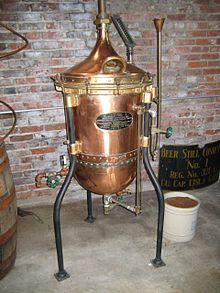**1. Liquor Categories and Production:**
– Spirit refers to liquor without added sugar, typically 35-40% ABV.
– Fruit brandy is also known as fruit spirit.
– Liquor with added sugar and flavorings is called liqueurs.
– Liquor generally has over 30% alcohol when bottled.
– Beer and wine have a max alcohol content of about 15% ABV.
– Types of liquor include vodka, rum, whiskey, tequila, and gin.
– The production process involves fermentation, distillation, aging, blending, and bottling.
– Alcohol content varies by type, typically measured in ABV, with liquor having higher ABV than beer or wine.
**2. History and Etymology of Liquor:**
– The term “liquor” originates from the Latin verb ‘liquere’ meaning to be fluid.
– The first documented use of liquor in English dates back to the 14th century.
– Liquor as an intoxicating drink emerged in the 16th century.
– Evidence of distillation dates back to ancient Mesopotamia and was known in Roman Egypt in the 1st century.
– Distillation techniques evolved over time, with advancements in China, the Middle East, and Europe.
– The distillation of wine is attested in ancient Arabic and Latin works, with the process evolving over centuries.
**3. Government Regulation and Safety of Liquor:**
– In the EU, spirit drinks must contain at least 15% ABV, with specific regulations and categories.
– Some countries allow hobby distillation for personal use, while others restrict or prohibit it.
– Microdistilling emerged in the U.S. following the craft beer movement.
– Regulations classify spirits as dangerous goods, requiring adherence to specific guidelines.
– Material Safety Data Sheets provide essential information on the safe handling of spirits.
**4. Health Effects of Alcohol Consumption:**
– Alcohol consumption has short-term effects on psychological and physiological health.
– Excessive alcohol consumption increases the risk of heart disease, stroke, disorders, physical dependence, and cancer.
– Alcoholism reduces life expectancy and is a leading cause of early death in the U.S.
– Alcohol abuse is associated with various health risks, including cardiovascular issues and cancer.
– Recognition and management of alcohol withdrawal symptoms are crucial for individuals struggling with alcoholism.
**5. Regulations, Safety, and Health Information:**
– Regulation (EU) 2019/787 defines, describes, and labels spirit drinks, protecting geographical indications.
– Safety information on handling spirits, including their flammability and combustibility, is crucial.
– Understanding the health impacts of alcohol consumption, from liver damage to cardiovascular benefits, is essential.
– Various books, publications, and organizations offer comprehensive insights and resources on alcohol-related topics.
– Fact sheets and reports from organizations like the WHO provide guidelines on defining and treating alcoholism.
Liquor (/ˈlɪkər/ LIK-ər) is an alcoholic drink produced by the distillation of grains, fruits, vegetables, or sugar that have already gone through alcoholic fermentation. Other terms for liquor include: spirit, distilled beverage, booze, spirituous liquor or hard liquor. The distillation process concentrates the liquid to increase its alcohol by volume. As liquors contain significantly more alcohol (ethanol) than other alcoholic drinks, they are considered "harder." In North America, the term hard liquor is sometimes used to distinguish distilled alcoholic drinks from non-distilled ones, whereas the term spirits is more commonly used in the UK. Some examples of liquors include vodka, rum, gin, and tequila. Liquors are often aged in barrels, such as for the production of brandy and whiskey, or are infused with flavorings to form flavored liquors, such as absinthe.



While the word liquor ordinarily refers to distilled alcoholic spirits rather than beverages produced by fermentation alone, it can sometimes be used more broadly to refer to any alcoholic beverage (or even non-alcoholic products of distillation or various other liquids).
Like other alcoholic drinks, liquor is typically consumed for the psychoactive effects of alcohol. Liquor may be consumed on its own ("neat"), typically in amounts of around 50 millilitres (1.7 US fluid ounces) per served drink. In an undiluted form, distilled beverages are often slightly sweet and bitter and typically impart a burning mouthfeel with an odor derived from the alcohol and the production and aging processes; the exact flavor varies between different varieties of liquor and the different impurities they impart. Liquor is also frequently mixed with other ingredients to form a cocktail.
Rapid consumption of a large amount of liquor can cause severe alcohol intoxication or alcohol poisoning, which can be fatal. Consistent consumption of liquor over time correlates with higher mortality and other harmful health effects, even when compared to other alcoholic beverages.
